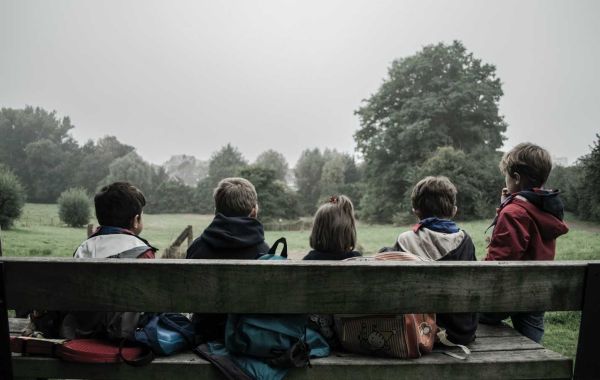After World War II, most kids in the Soviet Union had a tough time growing up. The government controlled everything, and kids were taught to follow certain rules. If not, they got in trouble. Kids had little freedom, and things were hard for their families. It was also tricky to figure out how to act around different people. Growing up in the post-WWII Soviet Union was a challenging experience for many kids.
Here are some examples:
Ideological Education
In the post-World War II Soviet Union, children were heavily influenced by communist ideas. From a young age, they were taught about the principles of Marxism-Leninism, which is the ideology that supported the Soviet government. Their education emphasized the achievements of the Soviet state and glorified the communist way of life. Kids learned that the government was always right and that questioning its decisions or speaking out against it was not allowed. This strict control over children's education shaped their beliefs and perspectives as they grew up.
Economic Crisis
After the end of World War II, the country faced significant economic hardships. The nation was in the process of rebuilding and recovering from the massive destruction caused by the war. Bare necessities such as food and clothing were in short supply, and people had to wait hours in queues to buy them. The shortage of vital resources was widespread, and the government struggled to provide for its citizens. Despite the challenges, the country persisted, and the people worked hard to rebuild their lives and the nation's economy. The post-war period was a time of great sacrifice, determination, and resilience as the country rose from the ashes and laid the foundation for a better future.
Collective Living
In Soviet Russia, communal living was a commonly practiced way of life. Many families shared apartments, each occupying a section of the space. This meant living areas like kitchens, bathrooms, and hallways were shared among the different families. Such arrangements often led to limited privacy, and occupants had to be mindful of one another's needs and schedules. Children grew up in close quarters with other families, which could be both a positive and negative experience.
While the communal living environment encouraged socialization and togetherness, it could also lead to conflicts and disagreements. Overall, communal living was a unique aspect of Soviet life that shaped many families' and individuals' experiences and perspectives.
Patriotism
Children were taught to be loyal to the Soviet state through patriotic events and ceremonies celebrating Soviet achievements, leaders, and the Communist Party.
Rigid Social Structure
The society of the Soviet Union had a strict social structure that limited social mobility. The government controlled many aspects of life, including career choices and housing arrangements.
The historical events and cultural norms shaped the upbringing of a whole generation, leaving a lifelong impact on their lives. To learn more, Irina Reiches has shared personal accounts of Holocaust survivors and their families in her book Duet of Angels. This book depicts the horrors, brutality, and consequences of World War 2 and its life-altering impact on people's lives.
Grab your copy now!








